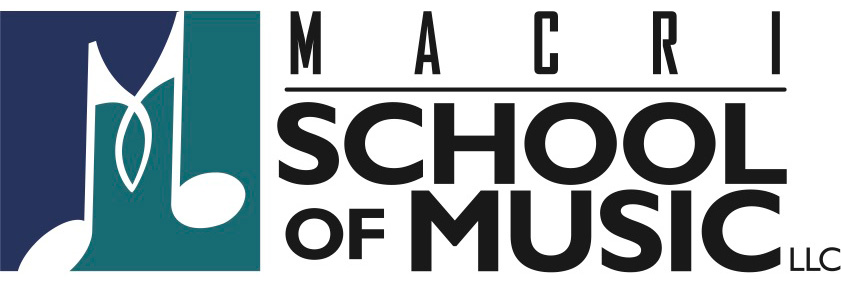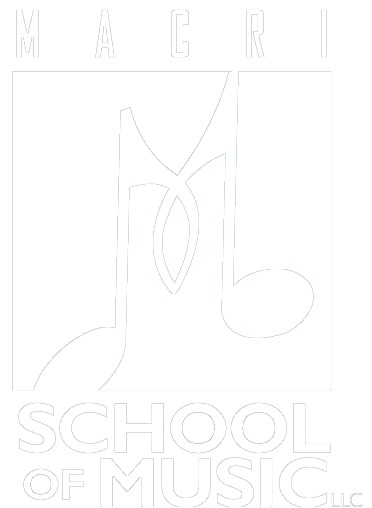Harmony Guitar Lesson
In this month’s lesson we will take a look at constructing single note harmony lines on the guitar. I have always loved two guitar bands that featured two or three part harmonies in their riffs and solos. Bands like The Allman Bros, Thin Lizzy and Iron Maiden, to name but a few, always crafted catchy hooks with their harmony lines. Players like Jimmy Page and Brian May would use the recording studio to overdub various guitar parts and harmonies to create glorious sounding guitar orchestras. Musicians will often times fashion their harmony parts solely by ear. This is always the ultimate litmus test as to whether or not something passes muster but a downside is that it takes time to compose via trial and error. However, with a bit of theoretical knowledge, we can craft harmonies with less guesswork and frustration. By understanding intervallic relationships between notes, we can know ahead of time what our harmonies will sound like. Vocalists in particular, have the ability to do this on the fly due to the fact that their ears are strong but also because they know how to sing specific harmonies. An interval is simply defined as the distance between two notes. Most guitar harmonies consist of thirds,fourths, fifths, and sixths, but in theory any interval could be used. Some note relationships have more tension than others and it’s a matter of finding the right combination to suit your needs.
Ex.1 is a phrase in A Mixolydian ( A,B,C#,D,E,F#,G,). It is diatonic and ascends in step wise motion. This will be our melody and we can add a harmony line to add some color to it.
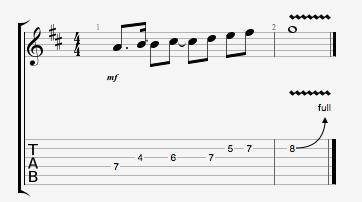
Ex.2 is a phrase that starts off of the 3rd of the A note. In other words the C# is a major 3rd above A and the notes that follow maintain the maj/min third interval as the line ascends.
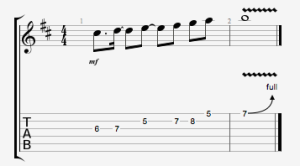
Ex.3 is a phrase that starts on F# which is a 6th above the A and again this line follows a maj/min sixth interval throughout.
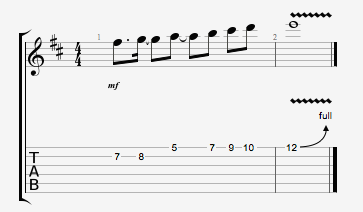
To sum up this process, if you have a diatonic line and you are aware of the interval relationship from the starting note it’s very easy to quickly play harmony parts. If you are in a two guitar band you can do this spontaneously while improvising and it really makes things sound interesting in solo sections.
Let’s analyze a few harmony parts in some tunes to see what some of the other possibilities are. A great way to develop vocabulary and work on ear training is to transcribe some harmony lines from your favorite songs or solos. One of the first bands I listened to that featured killer harmony parts was Iron Maiden.
Ex.4 is the intro riff to the Maiden classic “The Trooper”. The song is in Em and the intro figure is played twice in unison and then the 2nd guitar plays a harmony line. It starts off with a tied unison note but then moves to thirds and the occasional fourth. The “and” of two and four resolve in fourths until the 2nd bar and then the guitars resume to unison on the third beat and then the whole riff repeats.
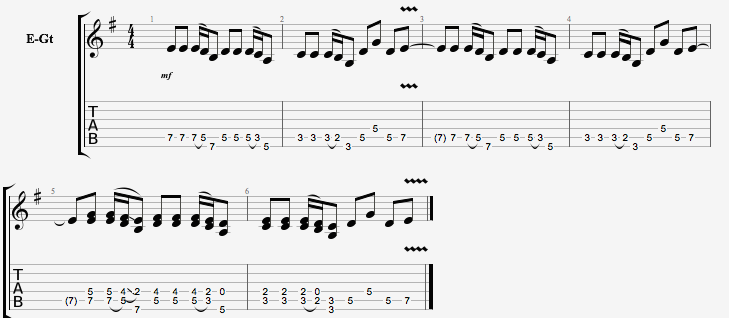
*Note* – In the tab the harmony guitar is written in the same measure – if the there is no higher part, Guitar 2 plays unison with Guitar 1.
Ex.5 is the interlude from the Thin Lizzy anthem “The Boys Are Back In Town “. This harmony features a combination of thirds and fourths and also take note of the quarter note triplets in the last measure. This is a great way to add rhythmic interest to your lines in addition to the harmony parts. The first note of the melody is a third – A & C# and then switches to a fourth – E & A. The 8th triplet lick is a combination of both.

Of course no lesson on guitar harmonies would be complete without featuring the classic guitar lineup of Duane Allman and Dickey Betts. Just pick up a copy of Live At The Fillmore for a clinic on blues based rock guitar playing, improvising and how to function in a two guitar band – as well as two drummers!
Ex. 6 is the Allman classic ” In Memory Of Elizabeth Reed “. My example takes off from the diminished lick before the second theme is played. Duane and Dickey play thirds here (diminished chords consist of all min 3rd intervals )and then proceed with a combination of thirds and fourths over a very tricky rhythm. The Fillmore album is a testament to how important playing live is to a band and how to achieve the stunning interplay that Duane and Dickey shared. Duane left us too soon but his legacy continues to shine.


I hope this lesson provided some insight into single line harmony parts for guitar. With the technology available such as loop pedals, Garageband, etc, it’s easier than ever to create multiple guitar parts for analysis, composition and just general fun. However, I recommend jamming with a friend and trying it out in real time. The feel between two different players brings life to these concepts and no two people will play things in exactly the same fashion. That is the magic of performing music with others!
